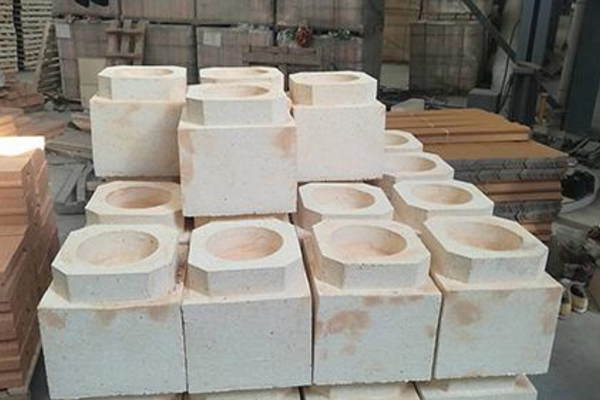
The different compositions of refractory bricks can be divided into five categories, namely: silicon-aluminum alloy alkaline series refractory bricks, 내화 벽돌, 탄소 벽돌, zirconium refractory bricks, and heat insulation bricks.
The different compositions of refractory bricks can be divided into five categories, namely: silicon-aluminum alloy alkaline series refractory bricks, 내화 벽돌, 탄소 벽돌, zirconium refractory bricks, and heat insulation bricks. Alumina refractory bricks are the first. Silicon bricks are the first acid-resistant refractory bricks.
For coke oven construction first, but for various glass, 세라믹, carbon furnace, refractory brick vaults and other bearing parts of the bearing furnace, hot air furnace temperature high parts of the use, but should not be less than 600 ℃ and temperature fluctuations of heat equipment.
점토 벽돌, it is a blast furnace, 뜨거운 용광로, 가열로, boiler, lime kiln, rotary kiln ceramic refractory bricks.
High alumina refractory bricks, high alumina refractory materials are composed of corundum, 물라이트, 및 유리상. The raw materials are natural ores of bauxite and silicate, as well as fused alumina, sintered alumina, mullite composition, and clinker of alumina and clay calcination. It is produced by sintering. 하지만, the commodity is also available as fused bricks, molten bricks, 벽돌, and amorphous bricks. 고알루미나 내화 벽돌은 철강 산업에서 널리 사용됩니다., 비철금속 산업, 및 기타 산업.
Corundum refractory brick, which is a kind of refractory brick with corundum as the first object, can be divided into sintered corundum brick, and electrofused corundum brick.
With the continuous development of the cement industry, the requirements for refractory materials have also been put forward higher. Refractory bricks are popular because of their high-temperature resistance. So, how do friends know the quality of refractory bricks?
The refractory brick quality inspection method is usually hammer smash brick base, listening to their sound is determined, when a dull sound “, also confirmed the refractory material internal open space or level, this brick is not suitable for processing. When the sound is balanced. Confirmation of the internal structure of the brick is better. Suitable for processing; when the sound is very clear, close to the metallic sound. It is proven that the internal sintering of refractory bricks is high and the process is difficult. It has a high density, good detail, 고강도, and high thermal conductivity per unit volume component.
Refractory bricks have the following characteristics: 화학 성분: the main components to determine the quality and performance of refractory materials; compressive strength: the ability to accept the maximum pressure (room temperature); 열 충격 저항: the ability to resist temperature changes without being destroyed. Flexural strength: the ability to accept shear pressure. Load softening temperature: also known as high-temperature load deformation temperature threshold, this parameter is very important to symbolize the high-temperature resistance of the material.
1. Thermal insulation performance
Refractory brick thermal conductivity is 1.0 (평온 350 ± 25 ℃) 승 / m.k 이상, while the thermal conductivity of insulation brick is generally in 0.2-0.4 (평온 350 ± 25 ℃) 승 / m.k. This can be concluded that the insulation performance of the insulation brick than refractory brick insulation performance is much better.
2. 내화 벽돌
The refractories of refractory bricks are above 1400 도, while the refractories of insulation bricks is mainly below 1400 도.
3. 밀도
The density of refractory bricks is basically above 2.0g/cm³, while insulation bricks are mostly light insulation materials, and density is generally 0.8-1.0g/cm³.
포괄적인, refractory bricks have high mechanical strength, 긴 서비스 수명, 좋은 화학적 안정성, 물질과 화학반응이 일어나지 않음, 그리고 좋은 고열 저항, 가장 높은 내열 온도에 도달할 수 있습니다. 1800 ℃. 특히 고온 및 저온 변환로에 사용하기에 적합합니다., 변환로, 수소화 변환기, 탈황 탱크, and methanation furnaces in fertilizer plants, and also in hot air furnaces and heating conversion equipment in the steel industry.
Refractory brick has the advantages of high density, 고강도, 내마모성, good corrosion resistance, small coefficient of thermal expansion, high grinding efficiency, low noise, 긴 서비스 수명, and non-staining materials. It is a high-quality grinding medium adapted to various grinding machines.
Insulation brick has heat preservation and insulation: effectively reducing energy consumption. Fireproof: reach the national standard A grade. Clean, environmental protection: will not cause secondary pollution of the air. Light weight: each square meter only weighs about 1.4 킬로그램, reducing the load of the building. Simple production: completely break through the traditional process, and greatly shorten the construction cycle. Aesthetic: adjustable to various colors, suitable for open installation. 튼튼한: 긴 서비스 수명. 7 major advantages.
내화벽돌 및 단열벽돌 매우 다르다, their use environment, 범위, 역할도 다르고. 다른 위치에서는 다른 재료를 사용합니다., 재료 구입에 있어서, we have to decide which refractory material is suitable for their use according to their actual situation.
10월부터, 알루미나 가격은 지속적으로 상승, and China's largest bauxite importer - a…
첫 번째, 고알루미나 벽돌: The Leader In High Temperature Refractories As a leader in high-temperature…
The application of refractory bricks in the kiln immediately endangers the operation rate of the…
Analysis Of The Causes Of Common Quality Problems In Tunnel Kiln Construction And Measures To…
Corundum quality refractory castables are made from corundum to the new jade refractory insulation material…